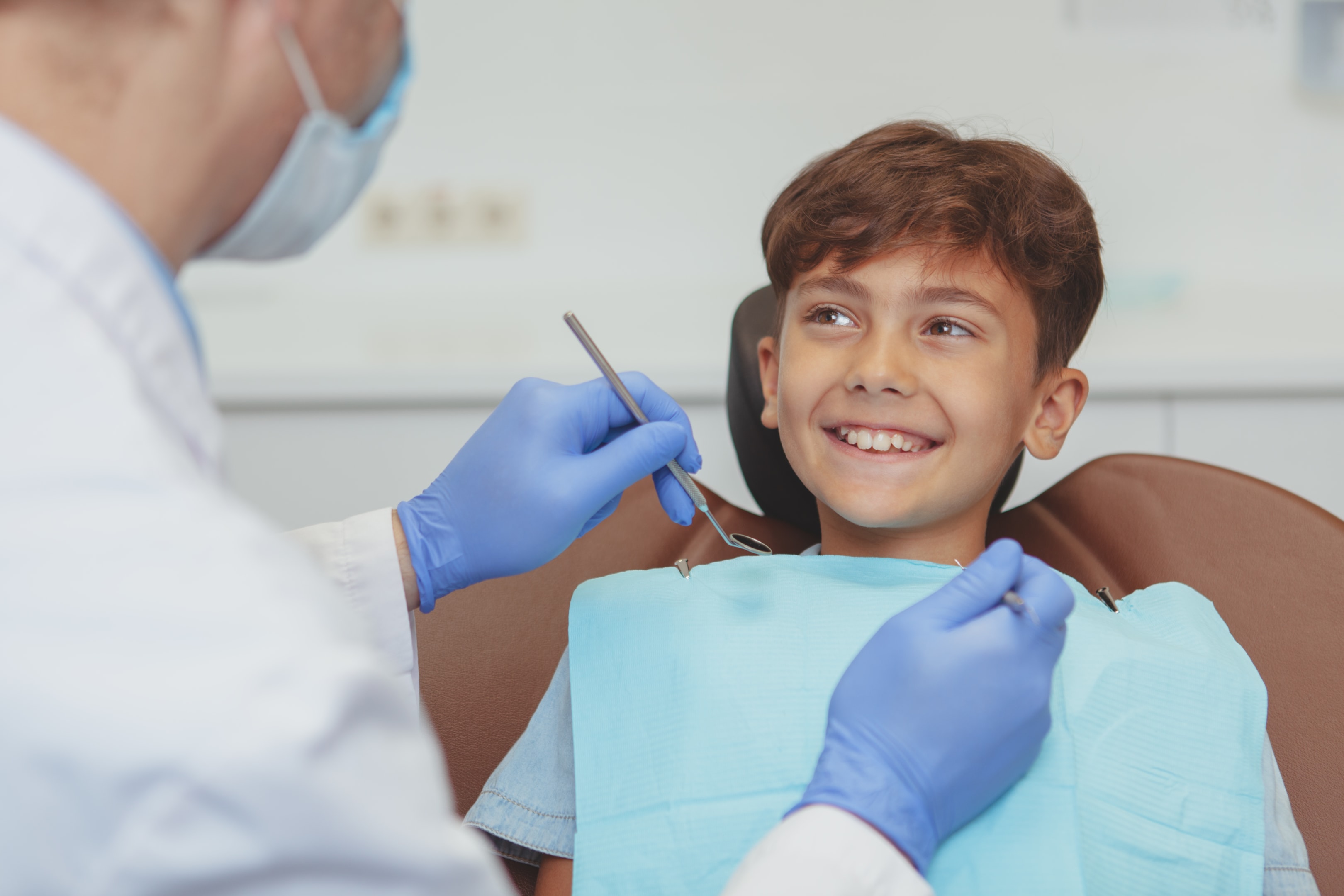
The Best Solutions on How to Fix Crowded Teeth Effectively
Crowded teeth are more than a cosmetic concern. They can make it hard to clean your teeth, affect your bite, and lead to further dental complications. Crowding happens when there isn’t enough space in the mouth for teeth to grow in their correct positions. The result is overlapping teeth, twisted teeth, or one or more teeth pushed forward or backwards.
Whether it’s upper or lower jaw crowding, early diagnosis and orthodontic intervention can prevent long-term oral health issues. This article will walk you through what causes dental crowding, why you should fix crowded teeth, and the best ways to correct crowded teeth effectively.
What Are Crowded Teeth?
Crowded teeth, also known as dental crowding, refer to misaligned teeth due to insufficient space in the dental arches. This condition often leads to overlapping teeth, crooked teeth, and difficulty maintaining oral hygiene. Crowding of teeth can occur in both the upper and lower jaw and is commonly seen in children and adults.
In severe cases, the crowding may affect chewing, speech, and overall dental development. Whether mild crowding or extreme crowding, treatment is essential to straighten teeth and prevent future dental complications such as plaque buildup, tooth decay, gum disease, tooth wear, and abnormal bite patterns.

Causes of Crowded Teeth
Crowded teeth are usually caused by a mismatch between jaw size and the size of teeth. Various factors can influence the development of teeth crowding, especially as space is limited for permanent teeth, and many of them begin early in life. Understanding what causes crowded teeth helps in choosing the right treatment for crowded teeth. Here are some common reasons:
a. Genetic Factors
Crowded teeth can be inherited. Small jaws or extra teeth from genetics cause overlapping or twisted teeth, which may stem from issues related to baby teeth. Dental arches may lack space for permanent teeth.
b. Early Loss of Baby Teeth
Losing baby teeth early from decay or injury may shift nearby teeth. This blocks proper growth paths, potentially leading to upper or lower teeth crowding later, especially if extracted teeth are not accounted for.
c. Prolonged Thumb Sucking or Pacifier Use
Thumb sucking beyond age four changes jaw growth. It pushes teeth out of alignment, causing crowding or crooked teeth, especially in the upper jaw region, and can lead to gum disease.
d. Impacted or Extra Teeth
Extra or impacted teeth create space issues. Wisdom teeth often worsen bottom crowding by pushing adjacent molars, affecting bite and causing further tooth misalignment complications, making it harder to clean food particles.
e. Small Jaw or Narrow Dental Arches
pSmall jaws or narrow arches can’t fit all the teeth. This forces teeth to overlap or twist. Expanders may help create space and avoid extractions later.Why You Should Fix Crowded Teeth
Leaving crowded teeth left untreated can lead to several health and aesthetic problems. Teeth that are too close together are harder to clean, increasing the risk of plaque buildup, tooth decay, and gum disease. Poor oral hygiene due to overcrowded teeth can result in bad breath and bleeding gums.

Ignoring treatment for crowded teeth can also cause:
- Tooth wear from misaligned teeth rubbing against each other
- Speech difficulties due to mispositioned teeth
- TMJ disorders are caused by an abnormal bite
- Difficulty in chewing food
- Jaw pain and tension headaches
- Higher chance of tooth extraction in the future
- Poor confidence due to crooked or twisted teeth
Fixing crowded teeth improves oral health and restores proper bite function. Whether you’re dealing with mild crowding or extreme crowding, it’s important to get an initial consultation with an orthodontist to find the best treatment option. Early intervention makes it easier to treat dental crowding and achieve straight teeth that are easier to maintain.
The Best Professional Treatments for Fixing Crowded Teeth
When it comes to how to fix crowded teeth, several professional treatment options are available. These treatments vary depending on the severity of the crowding, age of the patient, and dental history. Orthodontic treatment is often the most effective solution to correct crowded teeth and avoid future complications. Below are the most common treatment options:
1. Braces
Braces use metal brackets and wires to move misaligned teeth. They treat moderate to severe crowding and work over 12–36 months on upper and lower teeth.
2. Invisalign (Clear Aligners)
Invisalign uses clear, removable trays to shift teeth. Worn 20–22 hours daily, it treats mild to moderate crowding within 6 to 18 months, ideal for discreet correction.
3. Dental Veneers (In Some Cases)
Veneers are porcelain shells applied to tooth surfaces. They’re used for mild crowding to create a straighter appearance, not suitable for severe cases or poor oral health.
4. Tooth Extraction
Tooth extraction treats severe crowding by removing teeth to create space. Often combined with braces or aligners, it aligns remaining teeth and corrects narrow jaw spacing.
5. Palatal Expanders or Orthodontic Appliances
Expanders widen the upper jaw in children, making room for permanent teeth. Used before braces, they guide development and help prevent extractions or further crowding.
Comparison of Treatments for Crowded Teeth
| Treatment Type | Best For | Duration | Visibility | Removability | Severity Level |
|---|---|---|---|---|---|
| Traditional Braces | Teens, Adults | 12–36 months | Visible | No | Moderate–Severe |
| Invisalign (Clear Aligners) | Adults, Teens | 6–18 months | Invisible | Yes | Mild–Moderate |
| Dental Veneers | Adults (Cosmetic fix) | 2–3 weeks | Natural look | No | Very Mild |
| Tooth Extraction | All ages | Varies | Not visible | NA | Severe |
| Palatal Expanders | Children, Teens | 6–12 months | Partially visible | No | Early-Stage |
Lifestyle and Maintenance Tips for Better Results
Treating dental crowding does not end with braces or aligners. Long-term results depend on how well you maintain oral hygiene and follow aftercare. Good habits help prevent plaque buildup, tooth decay, and shifting of teeth. Below are some practical lifestyle tips, taking into account financial considerations, to support your treatment journey.
a. Brush and Floss Daily: Use a soft toothbrush and fluoride toothpaste. Floss daily, especially around overlapping teeth. Clean aligners or braces properly to prevent plaque buildup, gum disease, or decay.
b. Attend Regular Dental Checkups: Visit your dentist regularly to monitor treatment. Cleanings remove plaque, and orthodontists adjust braces or aligners. Checkups help ensure treatment for crowded teeth stays on track.
c. Wear Retainers After Treatment: After braces or aligners, wear retainers as instructed. They prevent teeth from shifting back. Clean them daily and store properly to maintain alignment long-term.
d. Avoid Hard and Sticky Foods: Skip hard candy and sticky snacks. They can break braces or misplace aligners. Follow food guidelines during treatment to avoid damage, pain, or delayed progress.
Choosing the Right Solution for You
Not every treatment works for every case. Here’s what to consider:
- Age and dental development stage
- Severity of crowding
- Oral health condition
- Lifestyle (work, school, comfort)
- Budget and insurance coverage
- Preference for visibility (braces vs. Invisalign)
- Willingness to follow care routines
Consult an orthodontist to explore the best treatment for crowded teeth in your case.
Take Action to Fix Overcrowded Teeth Early
We form better oral health habits when we fix crowded teeth early. Crowding affects appearance, function, and hygiene. Braces, aligners, and expanders offer effective solutions. After correcting alignment, maintain results through regular care. We form confidence and comfort with straight teeth.
To choose the best treatment for crowded teeth, consult our orthodontist for proper evaluation, options, and long-term guidance. Ignoring dental crowding can lead to worse complications. Fixing it protects your oral health and improves your quality of life. Start with an initial consultation about traditional braces nd follow through with recommended orthodontic care.
FAQs
1. How to fix crowded teeth without braces?
Mild dental crowding may be treated with Invisalign or dental veneers in some adults. In certain cases, retainers or space maintainers work if caught early. For children, palatal expanders can help create room. However, most cases need orthodontic treatment. If you're wondering how to fix teeth crowding without metal braces, clear aligners are a good option. Always consult an orthodontist for proper diagnosis before choosing a non-brace method.
2. What causes crowded teeth in adults?
Crowded teeth in adults often result from untreated childhood crowding, late wisdom teeth eruption, or shifting after losing retainers. The jaw may also become narrower with age, worsening alignment. Teeth may move toward empty spaces from earlier tooth loss or extractions. Adults with a history of thumb sucking or tongue thrusting may also develop dental crowding. If your lower teeth start overlapping in adulthood, seek orthodontic care to prevent complications.
3. How long does Invisalign take for crowded teeth?
Invisalign treatment usually takes between 6 and 18 months to correct crowded teeth. The exact duration depends on the severity of dental crowding, patient age, and consistency in wearing aligners. For mild crowding, some cases may be resolved in just 6 months. More complex cases, especially those with upper and lower teeth crowding, may require longer treatment and multiple sets of trays.
4. Can wisdom teeth cause lower teeth crowding?
Yes, wisdom teeth can cause lower teeth crowding when there isn’t enough space in the jaw. As they erupt, they may push existing teeth forward, especially the bottom front teeth. This pressure can lead to crowding of lower teeth and shifting of aligned teeth. In such cases, tooth extraction may be needed to prevent further dental complications. It’s common to remove wisdom teeth before or during orthodontic treatment.
5. Are braces the best option for severe crowding?
Yes, traditional metal braces are often the best treatment for severe crowding. They provide better control over tooth movement, especially in complex cases involving twisted teeth, overlapping teeth, or extra teeth. Braces can be combined with tooth extraction or Invisalign treatment, and palatal expanders for more effective results. If you have extremely crowded teeth, braces offer reliable, long-term correction and stability.
Leave a comments